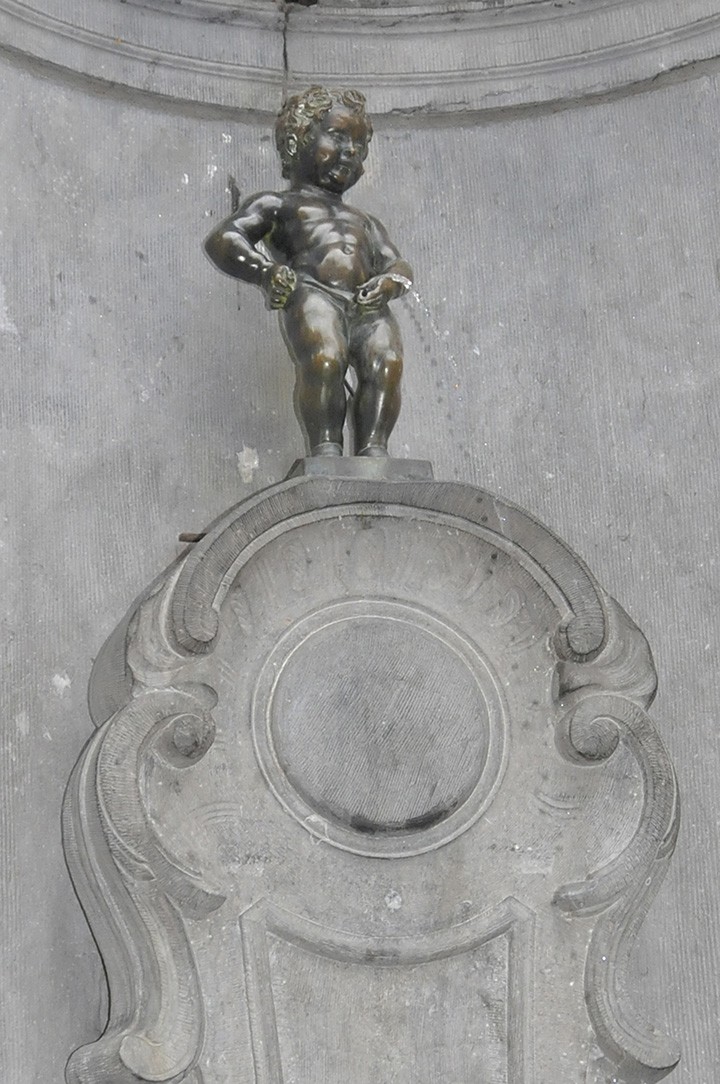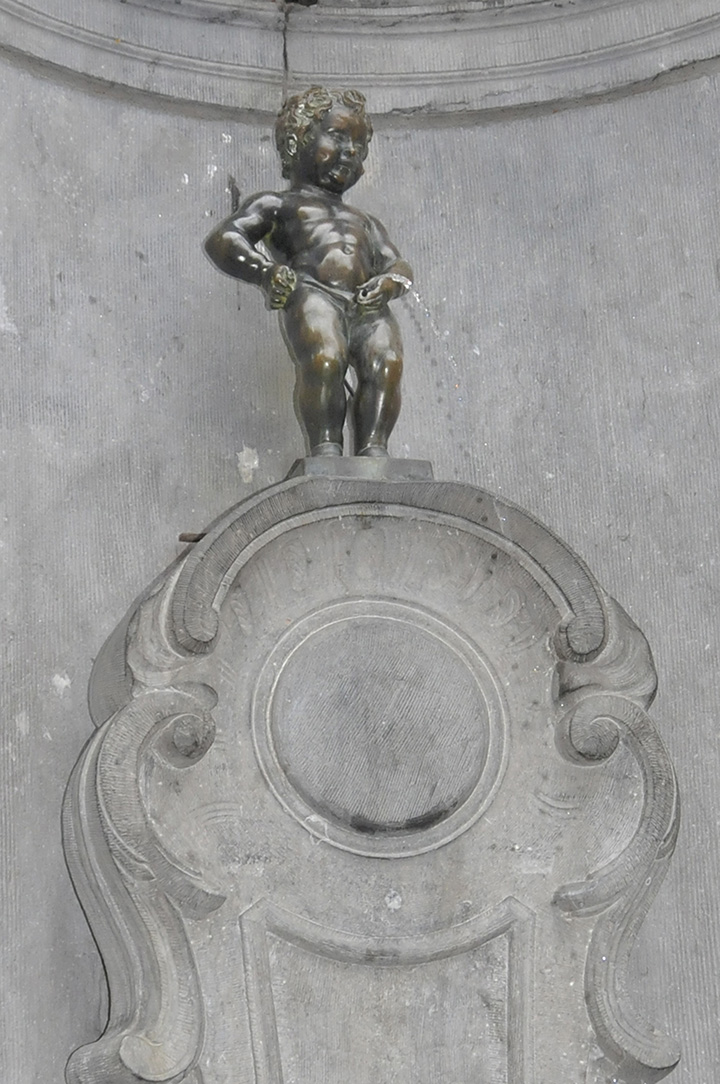
Many first-time visitors to Brussels, Belgium, immediately seek out its most famous symbol, a statue named “Manneken Pis,” Dutch for “little boy pee.” This irreverent two-foot-tall statue may explain why Brussels is often called the “Capital of Europe.”
No one knows when the first statue of a naked boy urinating into a basin was first erected two blocks southwest of Brussels’ Gothic town hall. References to a stone statue in that location appear as early as 1450. Numerous legends attempt to explain why such a statue would have been erected, some claiming a little boy relieving himself miraculously saved the city. What is known is that a local sculptor replicated the stone statue in bronze in 1619. In the ensuing nearly 400 years, Manneken Pis has been stolen repeatedly, most recently in the 1960s, after which the recovered statue was placed in a Brussels museum and a replica installed in its place. After Manneken Pis was stolen by a French soldier in 1745, King Louis XV made the little statue a knight and required passing French soldiers to salute.
Several times each week, workers dress Manneken Pis in one of nearly 900 costumes, some given to him by visiting heads of state. The costumes, displayed in the museum along with the original statue, include a sequenced jump suit aping Elvis Presley. When Manneken Pis dons his French officer’s uniform, French soldiers are still expected to salute.
Many believe the major European powers selected Brussels, with fewer than 180,000 residents, as the home of both the European Union and NATO because of the light-heartedness and self-deprecation reflected in Manneken Pis. Recognizing the extraordinary popularity of their naughty little guy, residents of Brussels have recently erected two other small statues employing the same theme – Jeanneke-Pis, a little girl, and Zinneke Pis, a dog.



